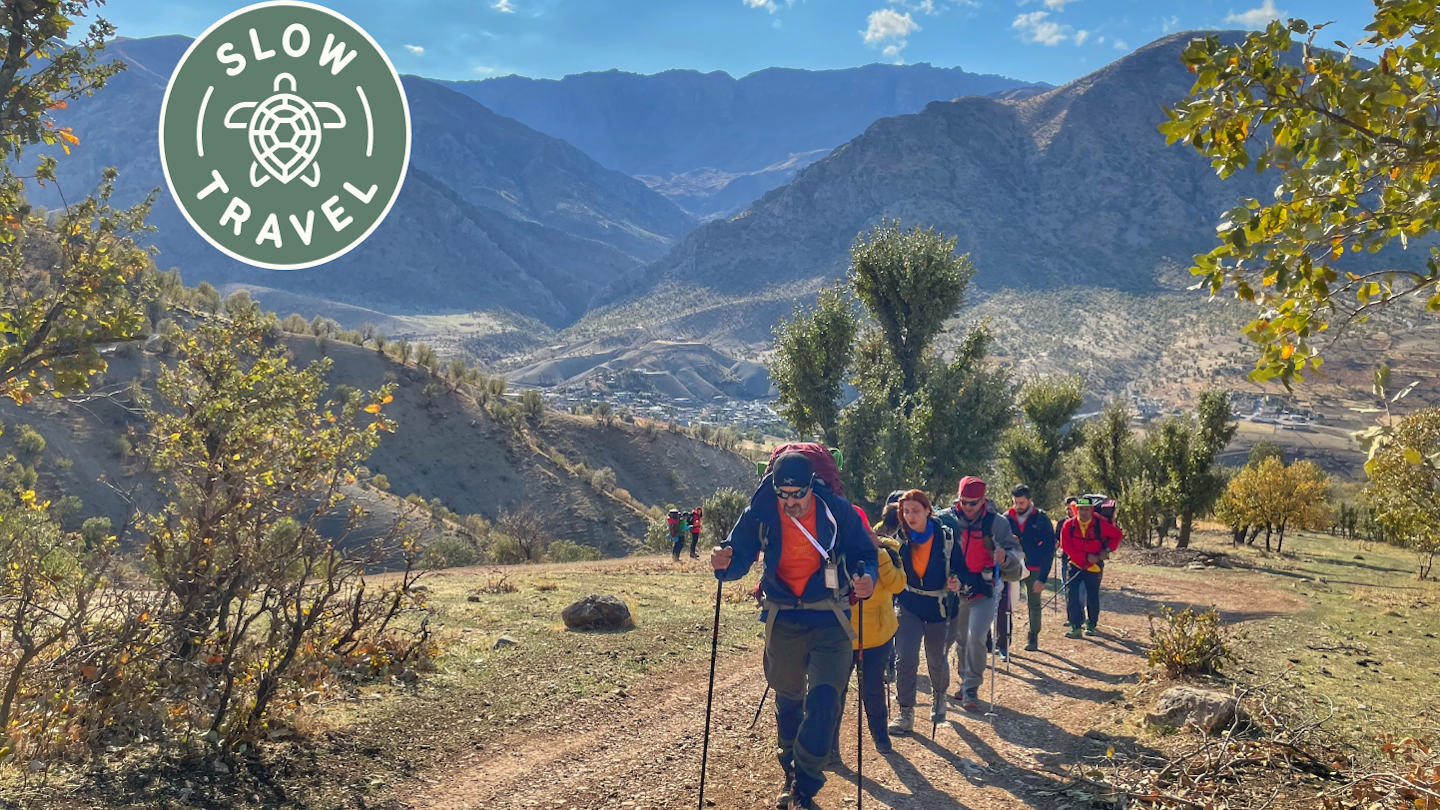Discover the Zagros Mountain Trail in Kurdistan
The Middle East presents a rich culture of walking, showcasing historical pilgrimage paths and following the footsteps of traditional nomads and shepherds. The newly established long-distance hiking trail in the Kurdistan Region of Iraq encourages travelers to explore an often-overlooked side of the country.
Exploring the Zagros Mountain Trail
The 215km-long Zagros Mountain Trail is the most recent addition to the region’s network of paths. It traces the routes of shepherds, pilgrims, traders, and those seeking solace through the majestic peaks of northern Iraq. Although the idea for this trail was conceived in 2016, it began to take shape in 2019.
Leon McCarron, a passionate writer from Northern Ireland and a co-founder of the trail, states, “It just struck me that this place had all the elements of the perfect hike: great natural beauty, many layers of history, existing trail networks, a rich culture, and an intrinsic hospitality from the people.”

Is Kurdistan Safe for Travelers?
Iraq may not be the first country that comes to mind for casual travelers, particularly for hiking activities. Discussions surrounding Iraq often gravitate toward politics and war. The US State Department discourages travel to Iraq, and other European nations advise against all but essential travel. Despite these warnings, the development of the Zagros Mountain Trail has been designed to remain rooted in the local culture, passing through 35 communities that offer homestays and local guides.

McCarron emphasizes, “Trails are a great way to help reimagine a place.” This assertion holds true in many regions where tourism, especially immersive tourism, facilitates healing from past conflicts and contributes to redefining national identities.
The Zagros Mountain Trail carves through diverse landscapes, including lofty elevations reaching up to 2000m. Its creators hope to attract various types of travelers.
Lawin Mohammad, a Kurd from Syria and co-founder of the trail, expresses, “I want to see all kinds of hikers on the ZMT. I want it to serve as a platform for cultural exchange, allowing visitors to remember our food, culture, music, and history.”
Although the trail spans a significant distance, guides currently conduct weekend hikes from Ankawa, a suburb of Erbil. McCarron explains, “We’re not quite at a point where we are opening up and inviting everyone to come. We are taking it step by step with these weekly walks, and hope to advance further by the fall and into early next year.”
The Growth of Long-Distance Hiking in the Middle East
In recent years, there has been a noticeable rise in long-distance and community-focused trails throughout the Middle East, including notable routes like the Wadi Rum Trail in Jordan and the Red Sea Mountain Trail in Egypt. Such trails provide opportunities for visitors to explore areas seldom seen by outsiders, all while enjoying the guidance of knowledgeable local experts.

Lawin Mohammad states, “We aim to establish the Kurdistan Region as one of the premier destinations for outdoor tourism in the Middle East. Personally, I have always envisioned a platform where I can meet diverse individuals, share stories, showcase the beauty of our land, and highlight the rich history and coexistence of our area.”





